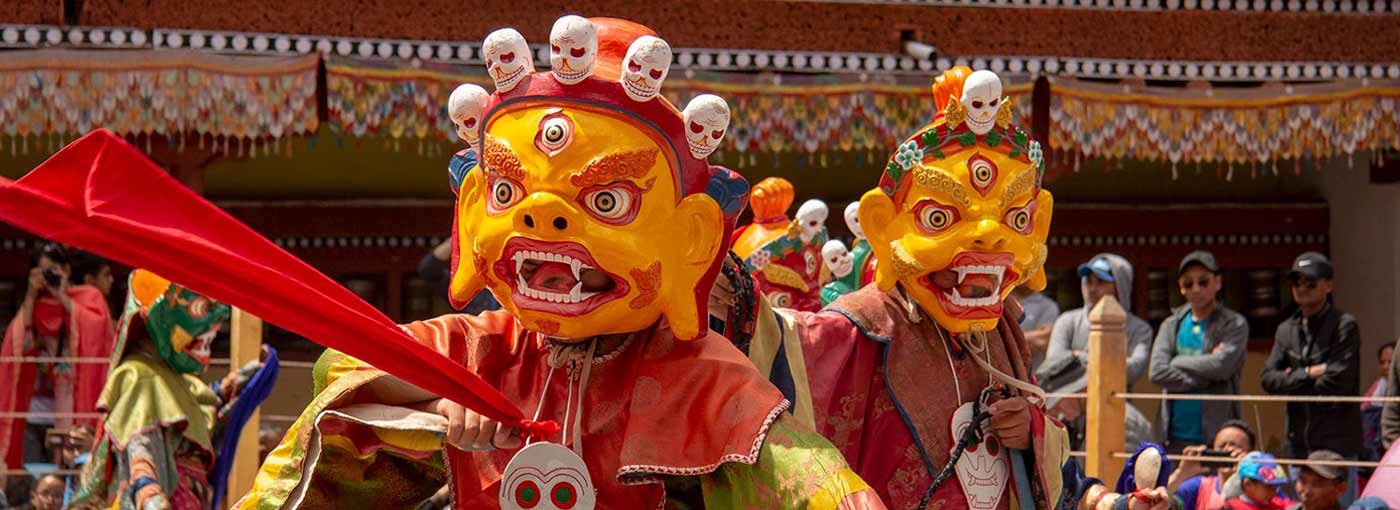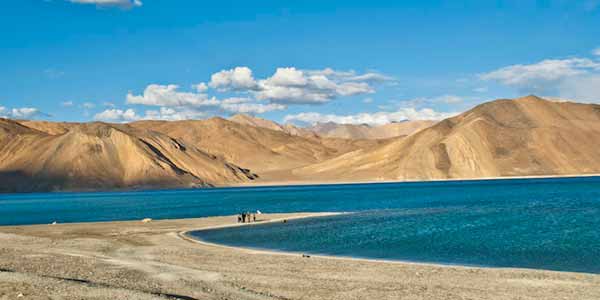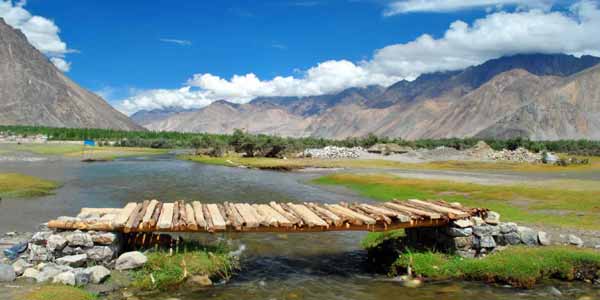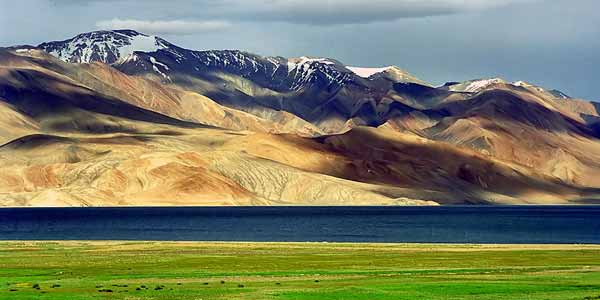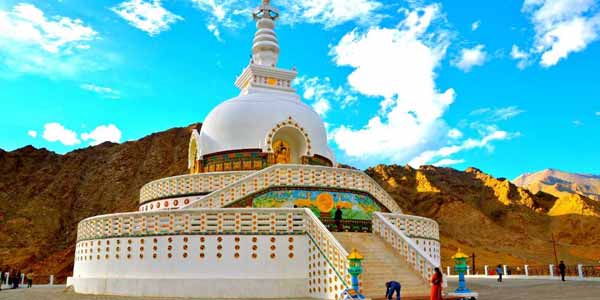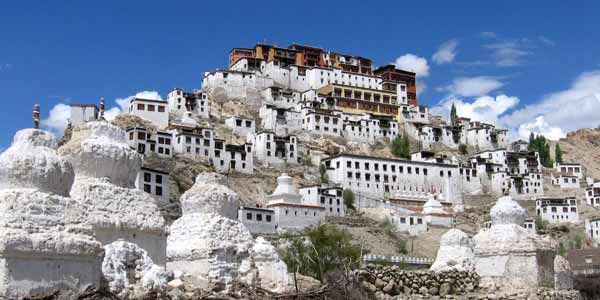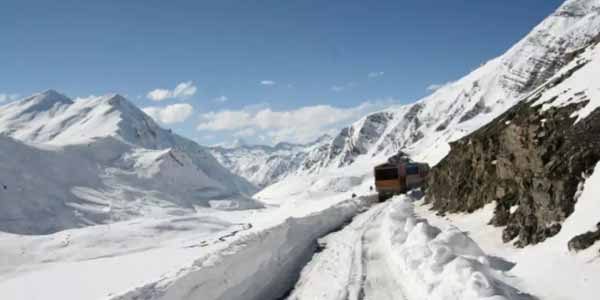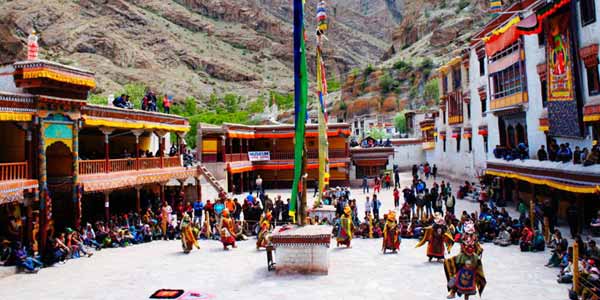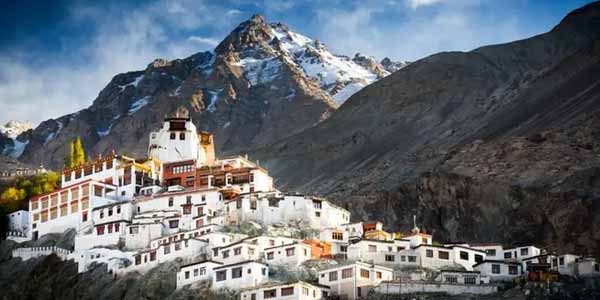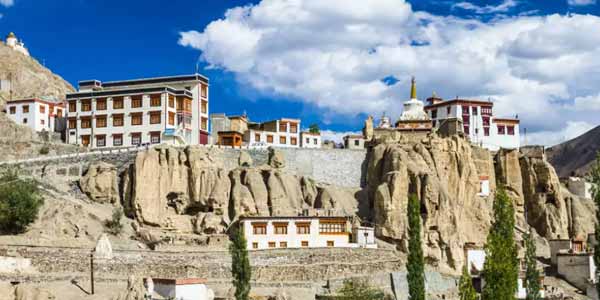
Pangong Lake
Pangong Tso for "high grassland lake", also referred to as Pangong Lake, is an endorheic lake in the Himalayas situated at a height of about 4,350 m (14,270 ft). It is 134 km (83 mi) long and extends from India to China. Approximately 60% of the length of the lake lies in China. The lake is 5 km (3.1 mi) wide at its broadest point. All together it covers 604 km2. During winter the lake freezes completely, despite being saline water. It is not part of Indus river basin area and geographically a separate land locked river basin. The lake is in the process of being identified under the Ramsar Convention as a wetland of international importance. This will be the first trans-boundary wetland in South Asia under the convention.
Pangong Tso is in disputed territory. The Line of Actual Control passes through the lake. A section of the lake approximately 20 km east from the Line of Actual Control is controlled by China but claimed by India. The eastern end of the lake is in Tibet. After the mid-19th century, Pangong Tso was at the southern end of the so-called Johnson Line, an early attempt at demarcation between India and China in the Aksai Chin region.
The Khurnak Fort lies on the northern bank of the lake, halfway of Pangong Tso. The Chinese has controlled the Khurnak Fort area since 1952. To the south is the smaller Spanggur Tso lake.
On October 20, 1962, Pangong Tso saw military action during the Sino-Indian War, successful for the People's Liberation Army
Pangong Tso is still a delicate border point along the Line of Actual Control. Incursions from the Chinese side are common.
The brackish water of the lake has very low micro-vegetation. Guides report that there are no fish or other aquatic life in the lake, except for some small crustaceans. On the other hand, visitors see numerous ducks and gulls over and on the lake surface. There are some species of scrub and perennial herbs that grow in the marshes around the lake.
The lake acts as an important breeding ground for a variety of birds including a number of migratory birds. During summer, the Bar-headed goose and Brahmini ducks are commonly seen here. The region around the lake supports a number of species of wildlife including the kiang and the Marmot.
Formerly, Pangong Tso had an outlet to Shyok River, a tributary of Indus River, but it was closed off due to natural damming. Two streams feed the lake from the Indian side, forming marshes and wetlands at the edges. Strand lines above current lake level reveal a 5 m (16 ft) thick layer of mud and laminated sand, suggesting the lake has shrunken recently in geological scale. No fish have been observed in the lake, however in the stream coming from South-eastern side (Cheshul nalla),three fish species (Schizopygopsis stoliczkae, Triplophysa stoliczkae and Triplophysa gracilis) have been reported (Bhat et al, 2011). The low biodiversity in the lake has been reported as being due to high salinity and harsh environmental conditions (Bhat et al, 2011).
Things to do at Pangong Tso
The beauty of Pangong Lake is in itself a reason enough to plan a trip there. However, there are other things to do at Pangong Tso that will keep you excited during the duration of your stay here. One of them is camping. Camping at the Pangong Lake can be an enthralling experience. Place a bonfire, get a barbecue going and enjoy the beauty surrounding you – it can't get better than this!
Although leaving the warmth of your camp is extremely difficult, go ahead and step out. During the night, the stars of the sky shine in all their glory. The feeling you get is that of oneness, of the skies and the universe immersing themselves in you. At dawn, get out of your camp and watch the sunrise. Watch, as the rising sun gradually disperses the darkness and ushers in the light. Carry a camera with you, and capture these splendid moments while you spend a wonderful time at one of the best lakes in India.
A few of the migratory birds also flock here. This makes the site heaven for the bird watching enthusiasts. You can further extend your trip to Tso Kar Lake.
The route to Pangong Lake is as beautiful as the lake itself. To get a glimpse of this beauty, stop about 10 km from before Pangong Tso, if you are coming from Leh. You will be greeted by a few signboards saying, “Stop here to see rare endemic species Marmot”. Marmots are large squirrels which are found in mountainous areas and reside in burrows. Despite being quite dodgy, they do come out from their potholes during the day. Thus, there is a good chance of spotting them.
An adventure is all about taking on challenges and being brave enough to try anything unusual. One of the unusual things to do in Pangong Lake is to take a dip in its cold and brackish waters. Usually, tourists leave Pangong Tso after sunrise as they have to reach Leh before sunset. Before doing so, take a dip in the lake. Yes, it sounds crazy, and you would be crazy enough to try it. But craziness is what makes an adventure thrilling and memorable.
Leh Ladakh Attractions
Ladakh Attractions people across the world with its beauty and adventures. The famous Buddhist culture surrounds Ladakh. People generally enjoy the traditional side of this region. Ladakh is a popular place for Buddhist festivals. Hemis Festival is one among them. Our article deals with the all the facts about this famous Hemis Festival.
 +91 9799050299
+91 9799050299 